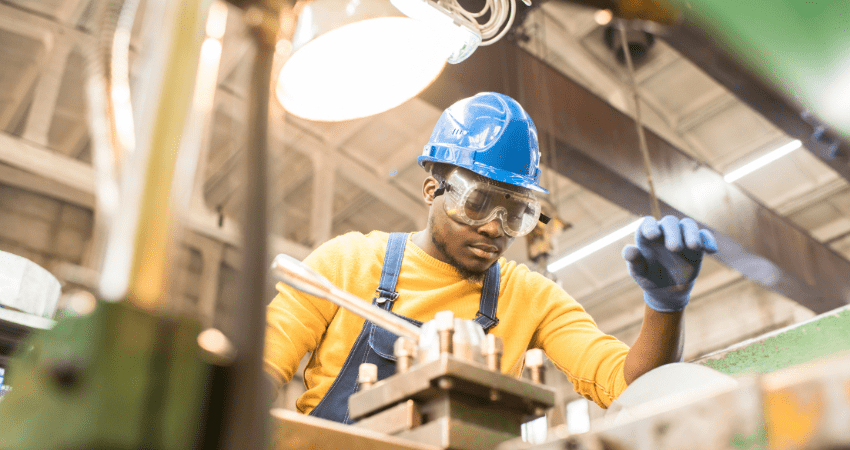Keep your hands safe at work!
Did you know, upper limb injuries account for about 25% of serious work injury claims? That’s higher than any other region in the body. The manufacturing, construction and mining industries are at the top of the list, but any injury to the upper limb needs to be treated seriously.
I remember treating my first iPhone injury back in 2011. It was from an executive who travelled a lot and used her smartphone for emailing while on the go. As a result, she overloaded the tendon in her thumb and was placed in a brace for 4 weeks.
Regardless of high or low-risk hand-use environments, you need to take care of your hands. I’ve seen small, shallow cuts to hands become long-term injuries due to nerves, tendons and other tissue being so close to the skin’s surface.
That’s why we want to help prevent them before they occur
The most commonly seen contact injuries in the workplace for upper limb injuries are a result of touching the wrong thing, using high-risk tools or simply putting our hands in the line of fire. Most of us know what not to do, yet we see people every day that know the risk of doing something dangerous still doing it… why?
Fatigue
When we are tired, we tend to do stupid things. If you are trying to prevent hand injuries in the workplace and you’re not addressing sleep and fatigue, I’m afraid you’re missing one of the most important steps to managing the risk of hand injuries.
Case Study
We worked with a large beverage industry player who was trying to understand why they were seeing consistent hand cuts over 2 years. From analysing the data, it was evident that rotating shift workers between 3am and 5am were at the highest risk of hand injuries.
To address this, we worked with the organisation to educate them via our sleep and fatigue stackable modules. Employees undertook sleep training and accessed testing to improve their sleep. Managers undertook fatigue training and learnt how to identify a tired worker and how to manage them. Finally, we helped the organisation produce a quiz that played over the radio every morning at 4am to help those nightshift workers reengage and revive to survive.
Within three months, we saw a 17% reduction in hand cuts
Mental Health
There’s a big difference between being at work and being present at work.
Staff need to access tools to manage stress and anxiety to be fully present onsite. In the landscape of employee wellness, a technique used by even our highest-level athletes is called mindfulness. It teaches employees to be in the present, a reminder to check in with our own senses such as hearing, smell, sight and gut instinct.
By being present, we can tune into our own senses and self analyse the risk. If you’re not aware of Todd Conklins approach to safety, check it out as a reminder that we cannot engineer all risks out of the business. Work practices and procedures can be well planned but rarely follow this perfectly. All day every day we are making decisions based on the current information at hand, and it is imperative we are in a good frame of mind to assess the information we have.
PPE, Reminders and Training
Workplace signage and scheduled toolbox talks are necessary throughout the year to bring back to life the serious nature of hand injuries in the workplace. Safety is for everyone, so to set the tone, it’s vital that even those in leadership positions adhere to site rules.
Giving your staff time to talk, document near misses and learn at toolbox talks is a major component. It provides another element to the training modules where your staff can hear and learn from relevant situations.
I could go on and on about the importance of hand safety in the workplace but why read about it when you can watch a quick demo video of our hand injury module instead.
It’ll give you a little taste test of what’s to come when you use Health Stacks online, on-demand, stackable learning modules.







